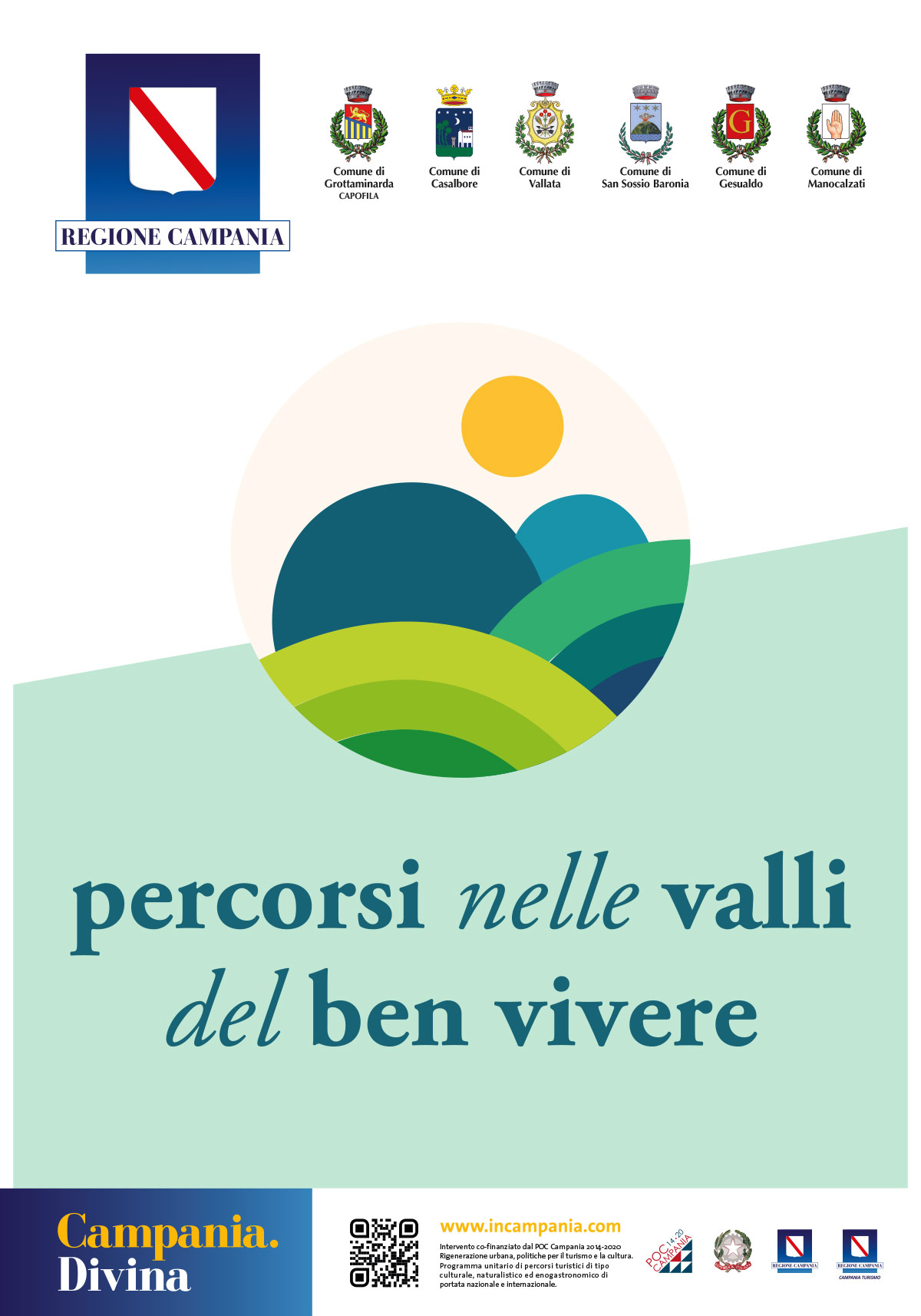ITINERARIES IN THE VALLEYS OF GOOD LIVINGThe Project
The well-being of a region is determined by a series of factors, of which per capita wealth, economic development, and employment opportunities are important but by no means exclusive. Indeed, when poorly managed, they can even be counterproductive. This is what emerges from the report on "Well-being" published by the daily newspaper Avvenire, which, in its latest edition, notes how the gap between North and South, specifically regarding "well-being," is progressively narrowing, even highlighting a slight improvement in several provinces in Southern Italy, including Avellino. Demography and family, health, civic engagement, the environment, tourism and culture, personal services, legality and security, employment, economic inclusion, human capital, and hospitality are the indicators considered to determine the results of this analysis. What emerges is a "traditional" vision of the good life linked not only to the aforementioned economic aspects, but also to the benefits of a shared lifestyle capable of enhancing humankind's relational nature. A lifestyle that, upon closer inspection, has always characterized the Irpinia Valleys, places where even today glimpses of that rural and peasant world survive, where human relationships, closely linked to the surrounding natural environment, were of paramount importance. Recovering and enhancing this lifestyle, along with the values associated with it, is the primary aim of this project proposal, which focuses on the "good life" of the Ufita, Miscano, and Sabato Valleys, making it a model around which to build an attractive tourism offering that not only encourages tourist attraction, but also promotes sharing with visitors the lifestyle of the people who live here.
Tradition, folklore, culture, food and wine, spirituality, well-being, nature, and landscape are the elements around which the partner municipalities' tourism offerings will be built, as well as the cornerstones of the "Well Living" model of the Irpinia valleys. The "Paths in the Well Living Valleys" project, according to its promoters, will therefore be a means to foster sustainable local development that takes into account the importance of enhancing local environmental and economic resources, as well as the socio-cultural aspects of these areas. The ultimate goal is to revitalize the territories of the municipalities in the aforementioned valleys, making them attractive to tourism and external investors, as well as to their own inhabitants, fostering the development and sharing of relationships between residents and visitors. This will be achieved through the implementation of an integrated tourism project, structured into multiple actions designed according to a common format. Activities aimed at promoting local resources (tastings, guided tours, trekking excursions, etc.) will be combined with opportunities for in-depth study (conferences, conversational shows, etc.) and entertainment/entertainment, thus creating an innovative and attractive offering in various respects and capable of attracting a variety of audiences. Based on the general objectives outlined above, this project proposal aims to achieve the following specific objectives:
- Increase the tourist attractiveness of the Ufita, Miscano and Sabato valleys and the municipalities belonging to them, an area with a strong rural character, rich in food and wine production but also in history and traditions
- Promote the local culture of "good living" by making it a model of tourist attraction
- Promote the adoption of this model by visitors/tourists
- Strengthen the socio-economic impulse resulting from tourism trends directed towards internal areas
- Enhance the cultural, architectural, natural and productive resources present in the area being intervened upon, making them tourist attractions
- Trigger integrated sustainable development processes between the various economic sectors present in the area: food and wine production, artistic and traditional crafts, and tourism services
- Promote interaction and collaboration between the public and private sectors
- Expand the tourism and cultural programming of the municipalities involved by adhering to the Regional Notice


